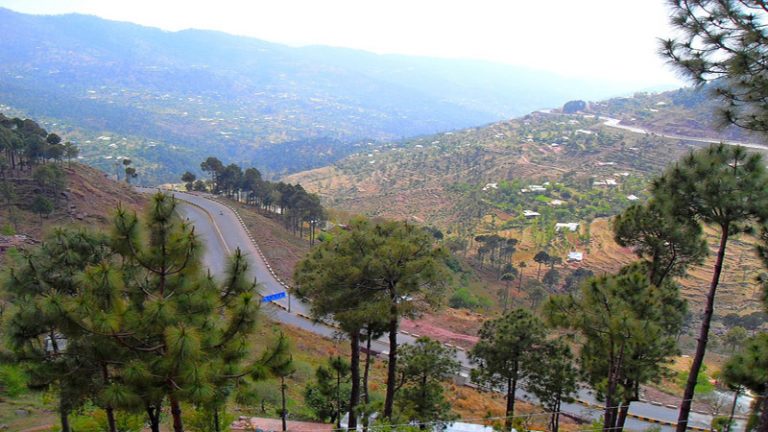Murree: A Historical and Cultural Gem of Pakistan (Also Me)
Murree is a mountain resort city, located in the Galyat region of the Pir Panjal Range, within the Murree District of Punjab, Pakistan. It forms the outskirts of the Islamabad-Rawalpindi metropolitan area and is about 30 km (19 mi) northeast of Islamabad. It has an average altitude of 2,291 metres (7,516 ft). Murree is one of the most popular tourist destinations in Pakistan, attracting millions of visitors every year. But Murree is not just a place of scenic beauty and pleasant weather; it is also a place of rich history and culture, reflecting the diverse and dynamic heritage of Pakistan. In this blog post, I will explore some of the aspects of Murree’s history, current scenario, and significance.
History of Murree
Murree was first identified as a potential hill station in 1847 by Major James Abbott, a British officer who was impressed by its natural beauty and cool climate. The town’s early development was in 1851 by the President of the Punjab Administrative Board, Sir Henry Lawrence, who wanted to establish a sanatorium for British troops garrisoned on the Afghan frontier. The permanent town of Murree was constructed in 1853 and the church was consecrated shortly thereafter. One main road was established, commonly referred to even in modern times, as the mall. Murree was the summer headquarters of the colonial Punjab Government until 1876 when it was moved to Shimla.
Murree became a popular tourist station for British citizens of the British Raj, who enjoyed its refreshing and relaxing atmosphere. Several prominent Britons were born here, including Bruce Bairnsfather, Francis Younghusband, Reginald Dyer, and Joanna Kelley. During the colonial era, access to commercial establishments was restricted for non-Europeans, such as Lawrence College, Murree. Murree also witnessed some historical events, such as the 1857 War of Independence, the 1895 Kashmir earthquake, and the 1947 Partition.
Since the independence of Pakistan in 1947, Murree has retained its position as a popular hill station, noted for its pleasant summer weather. Many tourists visit the town from the Islamabad-Rawalpindi area, as well as from other parts of the country and abroad The town also serves as a transit point for tourists visiting Azad Kashmir and Abbottabad. The town is noted for its Tudorbethan and neo-gothic architecture, which gives it a distinctive and charming character. The Government of Pakistan owns a summer retreat in Murree, where foreign dignitaries, including heads of state, often visit.
Current Scenario of Murree
Murree is currently facing some challenges and opportunities, as it tries to cope with the increasing demand and pressure from tourism and development. On one hand, Murree is benefiting from the improved infrastructure and facilities, such as the Murree Expressway, the chairlifts, the hotels, and the restaurants, which make it more accessible and attractive for visitors. On the other hand, Murree is suffering from environmental and social impacts, such as deforestation, pollution, traffic congestion, waste management, and cultural erosion, which threaten its natural beauty and heritage.
Murree is also experiencing some changes and transformations, as it adapts to the changing times and preferences of the tourists and the locals. On one hand, Murree is preserving and promoting its historical and cultural legacy, such as the colonial-era buildings, the churches, the schools, and the museums, which showcase its unique and diverse identity. On the other hand, Murree is embracing and innovating its contemporary and modern aspects, such as the shopping malls, the amusement parks, the cinemas, and the festivals, which cater to the needs and expectations of the new generation.
Significance of Murree
Murree is not only a tourist destination, but also a symbol and a source of pride and inspiration for Pakistan. Murree represents the beauty and diversity of Pakistan’s natural and cultural landscape, as it offers a variety of attractions and experiences, such as the mountains, the valleys, the forests, the wildlife, the architecture, the cuisine, the art, and the music. Murree also reflects the history and heritage of Pakistan’s political and social evolution, as it witnessed and participated in some of the major events and movements that shaped the nation’s destiny. Murree also demonstrates the potential and progress of Pakistan’s economic and social development, as it showcases the achievements and challenges of the tourism and hospitality industry, which is one of the key sectors of the country’s growth and prosperity.
Conclusion: Murree: A Historical and Cultural Gem of Pakistan
Murree is a mountain resort city that has a lot to offer and to teach to its visitors and residents. It is a place of scenic beauty and pleasant weather, but also a place of rich history and culture. It is a place of challenges and opportunities, but also a place of changes and transformations. It is a place of pride and inspiration, but also a place of responsibility and stewardship. Murree is a historical and cultural gem of Pakistan, and it deserves to be cherished and protected.
Peace Out

Comments
Post a Comment